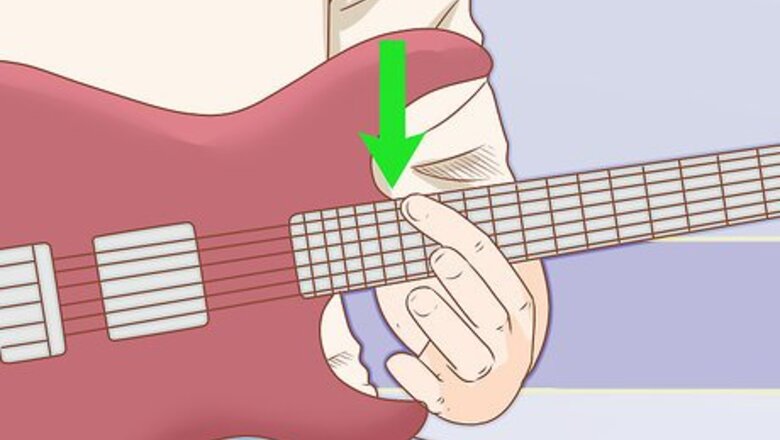
views
Setting the Truss Rod
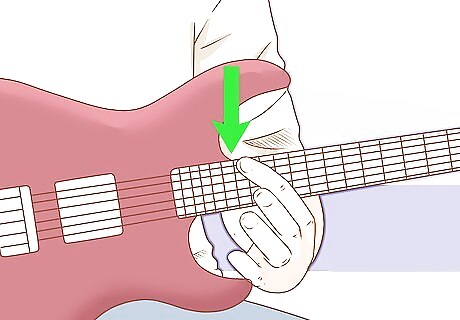
Hold down the fret closest to the body on the top string. The frets are the square or rectangular spaces on the neck. Hold down the fret that’s closest to where the neck and body of your guitar meet on the top string, otherwise known as the 6th string. This fret is usually the 12th fret on classical guitars. Electric and acoustic guitars have longer necks.
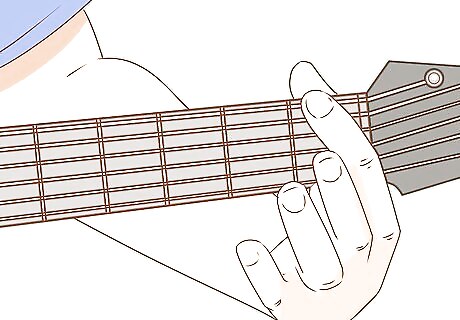
Hold down the first fret on the 6th string. Hold down the first fret with your other hand while continuing to hold down the fret closest to the body of the guitar. Doing this will allow you to see whether there is a gap between the strings and the neck of the guitar. You can also hold down the first fret with a capo, which is a guitar tool used to hold down strings on the neck. Using a capo will make it easier to examine your guitar while holding down the strings.
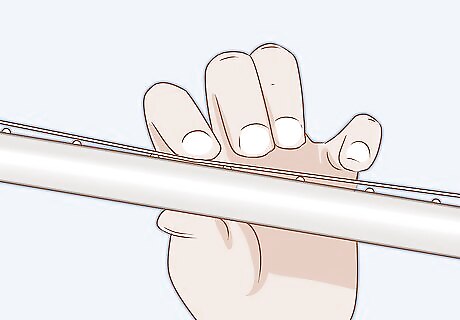
Look and feel for a gap between the string and neck. Look at the string and the neck of the guitar. There should be a gap about the width of a business card between the frets on the string that you’re holding down. Use a free finger to push down one of the frets on the top string. If the strings move a lot and there is a large gap, your neck has too much relief and you should tighten the truss rod. If the string doesn’t move at all and is tight against the neck with no gap, you’ll need to loosen the truss rod. The traditional setup is to have a very slight amount of curve in the neck, which is known as a concave bow.
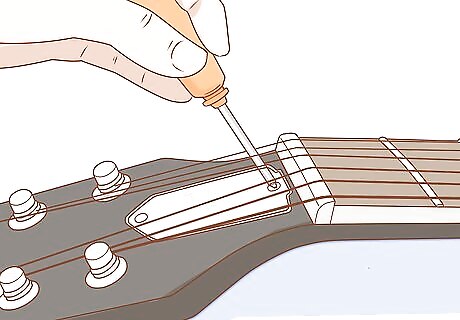
Remove the screws in the truss rod cover on the neck of the guitar. The truss rod cover is typically on the top of the neck of your guitar, near the tuning knobs, and looks almond shaped. You must remove this plastic or wood covering before you can make adjustments to the truss rod itself. Insert a Phillips head screwdriver into the top of the cover and turn it counterclockwise to remove it. This will reveal the tip of the truss rod. Once you remove the truss rod cover, you should see a hole with your truss rod in it.

Tighten the truss rod nut if there is a large gap. Use the truss rod wrench that came with your guitar or purchase one at a guitar store or online. Fit the wrench around the end of the truss rod and turn it clockwise a quarter turn to tighten it. This will reduce the bend in the neck and bring the strings closer to the neck in between the frets you’re holding down. If the gap between the strings and neck is too high, it will make it harder to play the guitar.
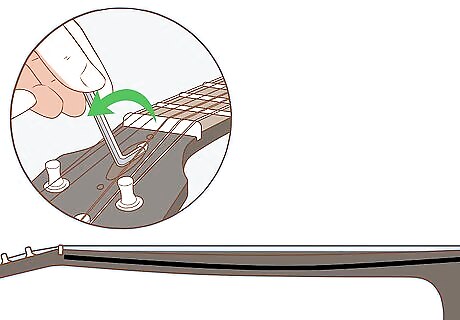
Loosen the truss rod nut if there is no gap in the neck. Fit the truss rod wrench around the end of the truss rod and turn it counterclockwise a quarter of a turn to loosen the tension in the neck. This should bring your strings off the neck of the guitar and will give them some space. Keep in mind that there should be just a small amount of space between the strings and neck. If your truss rod is too tight, it will cause the neck of your guitar to bow. This may cause buzzing noises as you play.
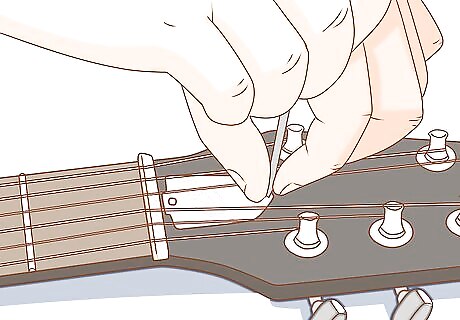
Screw the truss rod cover back on and wait a day. It may take some time for the neck to adjust to the new truss rod settings. Don’t play the guitar for a day. Re-examine the guitar by holding down the fret closest to the body of the guitar and the first fret on the same string. The neck of the guitar should be slightly concave. The strings should slightly come off the neck of the guitar.
Raising and Lowering Strings On the Bridge
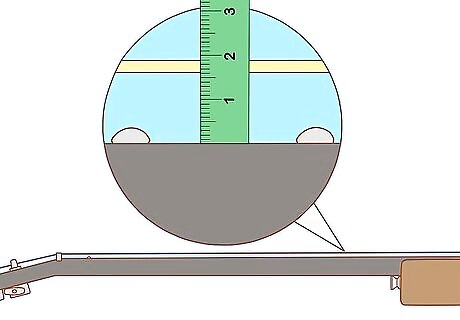
Measure the strings to the neck on the 12th fret. The distance between the strings and the neck at the 12th fret should be about 1.6 millimetres (0.063 in), or the width of a dime. Hold the flat end of a ruler against the neck and measure how high the strings are. If the strings are further than 1.6 millimetres (0.063 in), (high action) you need to lower the bridge. If the string has a low action, or the strings are less than 1.6 millimetres (0.063 in) from the neck at the 12th fret, you’ll need to raise the bridge.
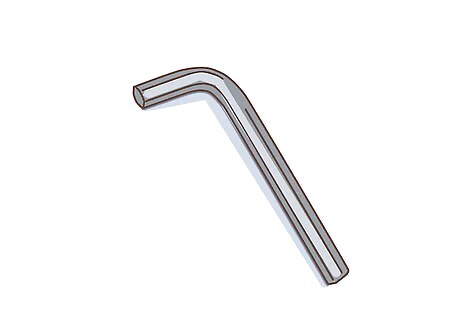
Use an Allen wrench to raise or lower each string on the bridge. There should be small holes that can fit an Allen wrench on your bridge. Insert the wrench into the corresponding hole of the string you want to adjust and turn it 2-3 rotations to raise or lower the bridge. If the string is too high, turn the Allen wrench clockwise to lower the bridge. If the string is too low, turn the Allen wrench counterclockwise.
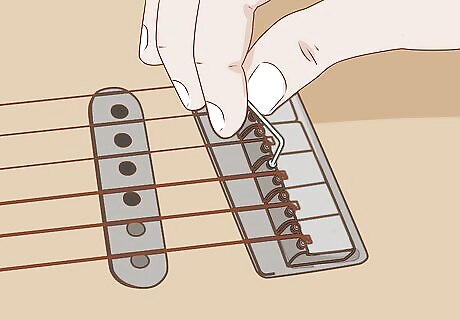
Adjust each string until there is a 1.6 mm (0.063 in) gap on the 12th fret. Continue raising or lowering the bridge on each string until they are around 1.6 mm (0.063 in). Play each string while holding down the 12th fret. If the string buzzes when you strum it, it means that the string is too close to the frets. In this case, raise the bridge by turning the Allen wrench in the corresponding hole clockwise. If it's hard to push down the strings onto the neck, your strings may be too far from the frets. The “action” or distance between the strings and the neck differs among guitar players, but 1.6 mm (0.063 in) is standard for most guitar players.
Changing String Length by Adjusting the Bridge
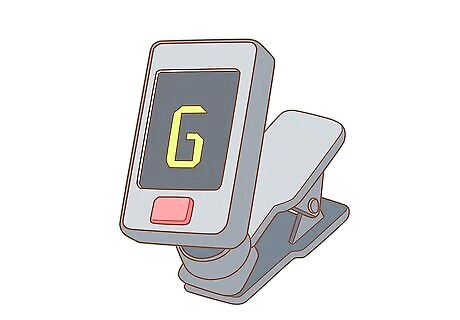
Tune your guitar with an electric tuner. The bridge elongates or shortens the length of your strings. If it’s not adjusted correctly, notes down the neck of the guitar will be flat or sharp. Strum the top string next to the tuner and adjust the tuning knobs until it’s an E. Put the rest of the guitar in standard E, A, D, G, B, E tuning.
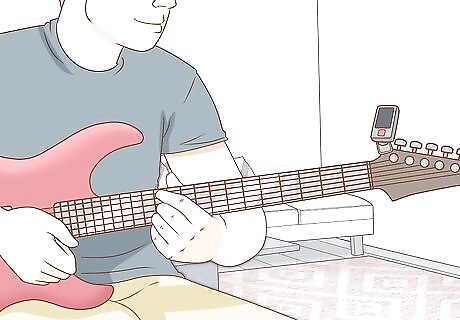
Strum the 6th string while holding down the 12th fret with a tuner. Holding down the 12th fret of the guitar should play the same note when you play the string without holding down any frets, otherwise known as the open position. Press down on the 12th fret on the top, or 6th string, and strum it. The note should be an E. If it isn't an E, you have to adjust the bridge.

Turn the screw on the bridge clockwise if the note is sharp. If your note on the 12th fret is sharp, the string is too short and you need to lengthen it. Look at the bridge and find the screws on the bottom of the bridge. Locate the screw that corresponds with the string that you need to adjust. Use a Phillip’s head screwdriver to turn the screw one full rotation clockwise.
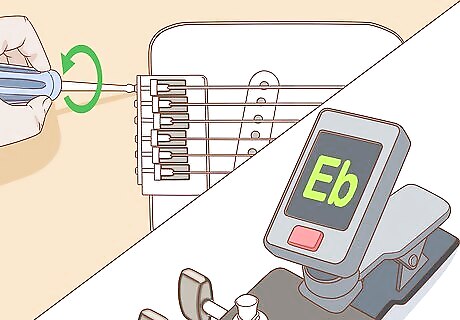
Turn the screw on the bridge counterclockwise to shorten the string. If the note is flat, or lower than an E, you’ll need to elongate the string. Rotate the screws on the back of the bridge counterclockwise one full rotation to shorten the string.
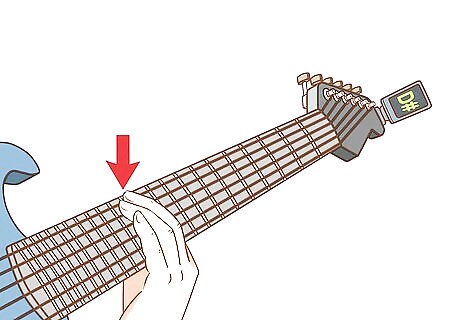
Check the note on the string when holding down the 12th fret. Turn on the tuner and hold down the 12th fret on the string that you just adjusted. Look at the note that is displayed on the tuner. If the note is still off when you hold down the 12th fret, you’ll need to make additional adjustments to the bridge until the note is the same note as the string when played in the open position.
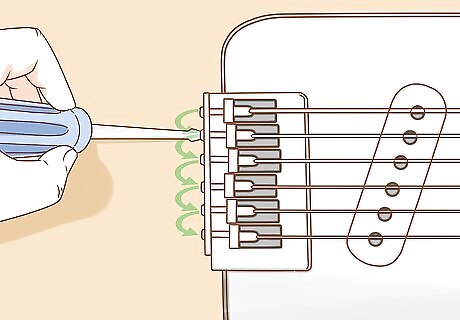
Repeat the process on the 5 remaining strings. Continue the same process on the rest of the strings, making sure that the 12th fret note and the open note are the same. Adjust all of the strings on the bridge so that the notes are the same. The second string from the top of the neck should be an A, the third string from the top should D, and so on.
Setting up the Pickups
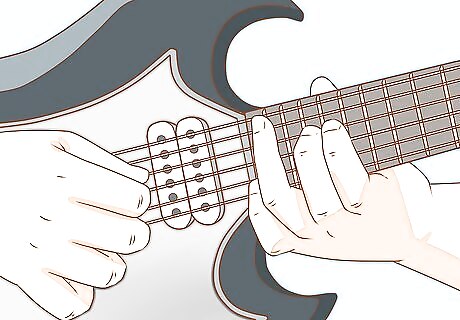
Hold down the fret closest to the pickups on the top string. The frets are the square spaces on your neck and the pickups are the rectangular studded pieces where you strum. Hold down the fret that’s closest to the pickups on the top string, or 6th string, so that you can determine whether your strings are the correct distance from your pickups. If your strings are too close to your pickups, it could create feedback or unwanted gain. If the strings are too far from the pickups, you may not get the full sound from your guitar.
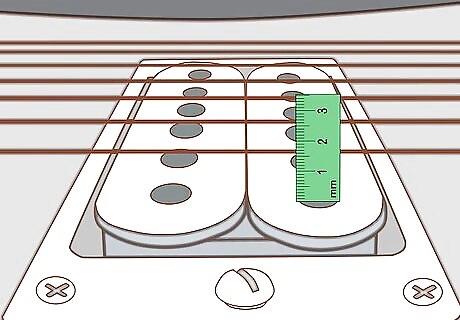
Measure the distance between the pickup and the string. Hold the end of a ruler flat against the top of the pickups while continuing to hold down the fret. Measure the gap between the pickups and the strings. This distance should be around ⁄16 inch (1.6 mm). If the distance is already ⁄16 inch (0.16 cm), you don’t have to adjust the height of your pickups.

Turn the top screw in the pickup so there’s a ⁄16 in (1.6 mm) gap. The screws that adjust the height are typically on the sides of the pickups. Turn the top screw clockwise with a Phillip’s head screwdriver to raise the pickup near the top string. Turn the screw counterclockwise to lower it. Adjust the pickup height until it’s ⁄16 inch (1.6 mm) from the string.
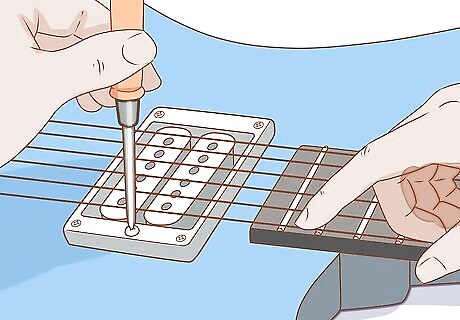
Repeat the process on the bottom string. Hold down the bottom string on the fret closest to the pickup and measure the distance. This time, adjust the bottom screw to raise or lower the lower portion of the fret. Adjust it until this string is also ⁄16 inch (1.6 mm) away from the pickups.










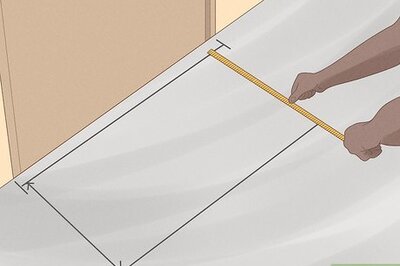


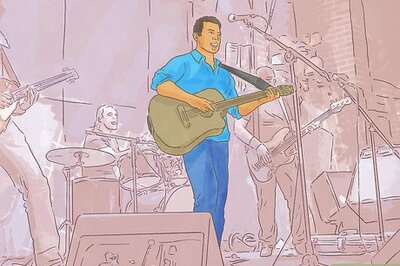

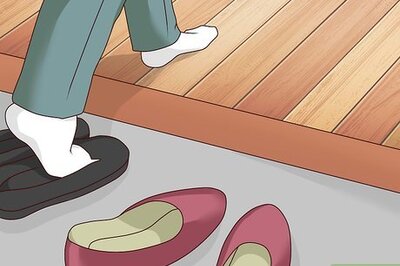



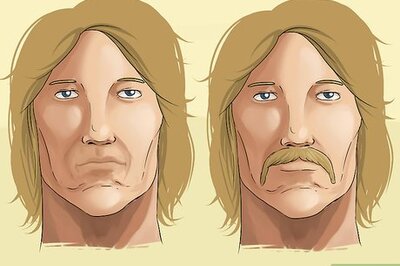
Comments
0 comment